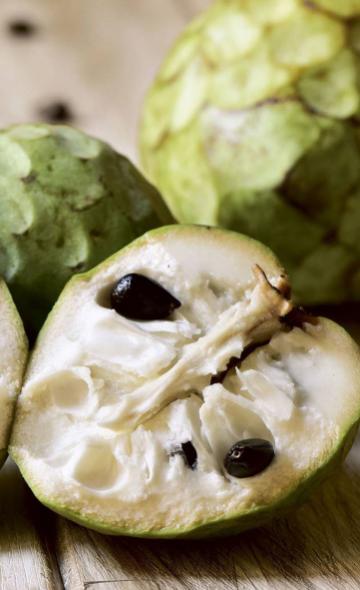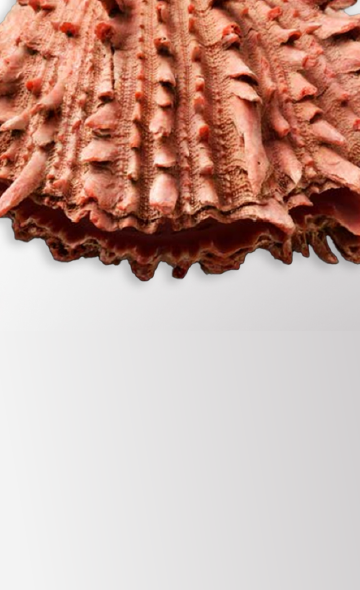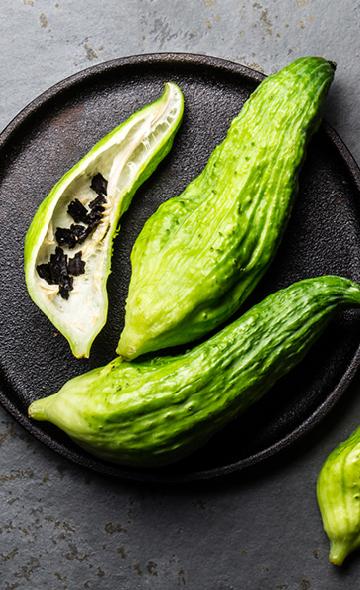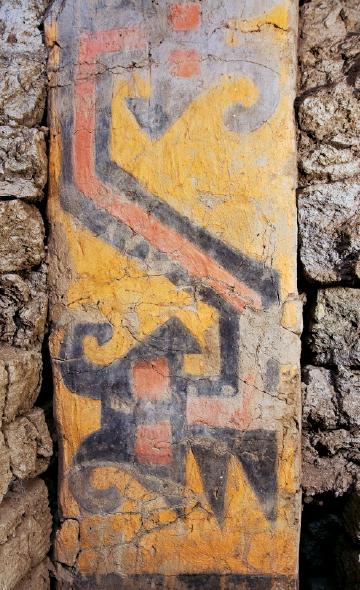- Visitors
- Researchers
- Students
- Community
- Information for the tourist
- Hours and fees
- How to get?
- Visitor Regulations
- Virtual tours
- Classic route
- Mystical route
- Specialized route
- Site museum
- Know the town
- Cultural Spaces
- Cao Museum
- Huaca Cao Viejo
- Huaca Prieta
- Huaca Cortada
- Ceremonial Well
- Walls
- Play at home
- Puzzle
- Trivia
- Memorize
- Crosswords
- Alphabet soup
- Crafts
- Pac-Man Moche
- Workshops and Inventory
- Micro-workshops
- Collections inventory
- News
- Students
- Andean Food Series: Cherimoya
News
CategoriesSelect the category you want to see:
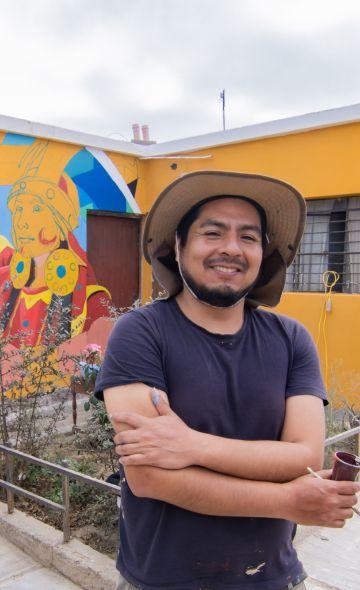
Magdalena de Cao to Once Again Host an International Mural Art Gathering ...
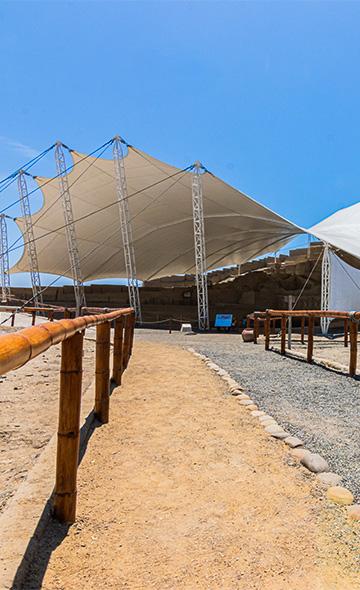
Explore El Brujo Through Virtual Tours: Culture and History at a Click ...
To receive new news.
By: Complejo Arqueológico El Brujo
About appearance and distribution, the cherimoya ("Annona Cherimola Miller") is a plant native to the inter-Andean valleys of Peru. Its tree can reach 10 meters in height and its fruits can reach up to 25 cm in diameter. The cherimoya can be planted, cultivated and harvested on the coast, mountains and jungle of our country. The Spanish conquistadors called it "manjar blanco" (white delicacy) precisely because of its sweet taste. It is common to see it offered on the roads, as food during travels, especially in the middle valleys.
About its origin
Renowned archaeologist Duccio Bonavia and colleagues argue that cherimoya is native to Ecuador and Peru. They further state that cherimoya grew and was consumed on both the north and central coasts, from times prior to the introduction of pottery to the Inca era. Ceramic vessels from the Valdivia culture, dated between 3,600 and 1,500 B.C., have been reported, where cherimoyas are depicted.
This is consistent with the formulations of Margaret Towle, who posited that the domestication of cherimoya started at the beginning of our era and in Peru (1961: 143). It is a consensus, then, that this important fruit comes from the area comprised between the north of our country and the south of Ecuador.
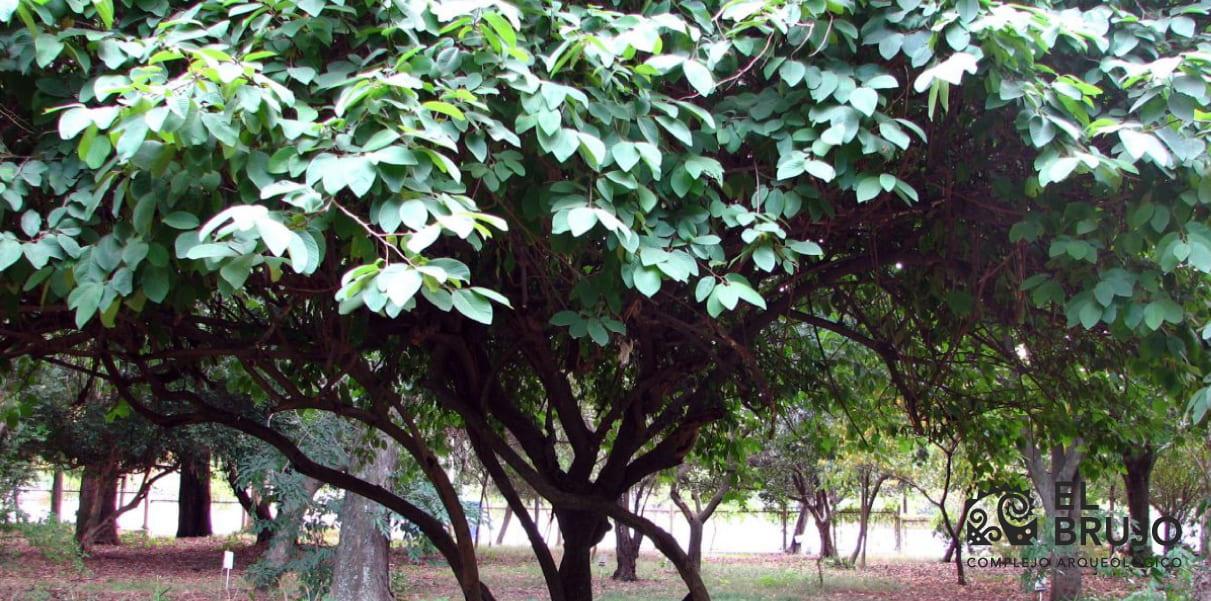
Properties of Cherimoya
It contains 20% carbohydrates, mainly glucose and fructose. This makes it a good source of energy. It is a food with low energy density. Therefore, people with type-2 diabetes or with metabolic syndrome can regularly include in their diet portions of half a cherimoya.
Vitamins and minerals are highly concentrated in its pulp. It contains abundant vitamins of the B group and vitamin C, as well as fair amounts of potassium, calcium and iron, and, though in very low proportions, also zinc, iodine, copper and manganese.
Its energetic effect is favored by the content of vitamins of the B group, which transform nutrients into cellular energy. A cherimoya provides about 20% of the vitamin B6 needed per day, and 15% of B1 and B2.
All this means that, in general, the consumption of cherimoya regulates blood pressure, strengthens bones and muscles, fights anemia and favors digestion.
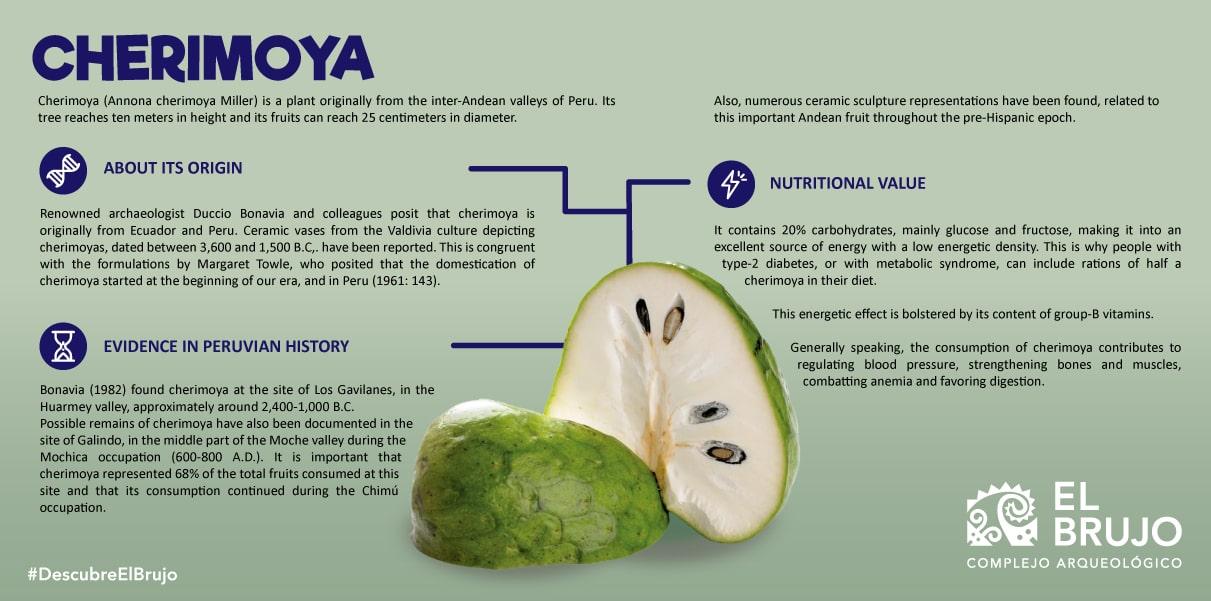
Evidences in the Ancient Peruvian history
Bonavia (1982) found cherimoya at the site of Los Gavilanes, in the Huarmey Valley, approximately circa 2,400-1,000 B.C. Lanfranco and Eggers (2010: 79) have reported the presence of cherimoya at various sites in the Puémape complex, south of the Jequetepeque valley, at least between 3,008 and 339 B.C.
Possible cherimoya remains have also been documented at the site of Galindo, in the middle part of the Moche Valley, during the Mochica occupation (600-800 AD). It is important to point out that it made up 68% of the fruits consumed at this site, being the most popular fruit of the settlement.
During the Chimú occupation, the consumption of this fruit continued. It has been shown to have been consumed with some frequency at the site of Pacatnamú, at the mouth of the Jequetepeque Valley, around 1,300-1,400 AD.
Moreover, there are abundant sculptural representations in ceramics alluding to this important Andean fruit throughout the pre-Hispanic epoch.
You can also read:
3. Andean Food Series: Avocado
Bibliography
- BONAVIA, Duccio. 1982. Los Gavilanes: Sea, oasis and desert in the history of man. Lima: Corporación Financiera de Desarrollo (COFIDE) and Instituto Arqueológico Alemán.
- BONAVIA, Duccio, Laura JOHNSON-KELLY, Elizabeth REITZ and Elizabeth WING. 2004 "Archaeological Evidence of Cherimoya (Annona cheromolia Mill) and Guanabana (Annona muricata L.) in ancient Peru". Economic Botany 58 (4): 509-522.
- LEON, Elmo. 2013. 14,000 years of food in Peru. Lima: USMP.
- TOWLE, Margaret. 1961. The Ethnobotany of Pre-Columbian Peru. Chicago: Aldine Publishing Company.
- PEZO, Luis and Sabine EGGERS 2010 "The Usefulness of Caries Frequency, Depth, and Location in Determining Cariogenicity and Past Subsistence: A Test on Early and Later Agriculturalists from the Peruvian Coast". American Journal of Physical Anthropology 143: 75-91
Students , outstanding news


